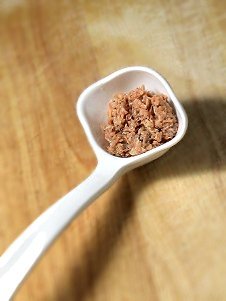
Ujáp/uyáp (Bisaya), bagoong alamang (Tagalog), kapi (Thai), belachan (Malay): shrimp paste by any other name smells as pungent. Wonderfully, mouth-wateringly pungent. One whiff of that distinct redolence and my salivary glands go into overdrive. Heaven, if it ever stinks, should definitely stink of shrimp paste. Sautéed, if you please.
Have you tried raw shrimp paste, though? It’s salty as hell; that is why you have to rinse it at least once before using. In Handbook of Indigenous Fermented Foods (CRC Press, 1995), Keith Steinkraus writes that shrimp paste is typically made with a 3:1 shrimp-to-salt ratio. If you think that’s too salty, you have another think coming. That’s just during the fermentation stage. Bagoong that eventually makes its way to your table has actually been re-hydrated with more brine.
I suspect not many people have seen ujáp in its unadorned glory. It is leaden-gray in color (as things tend to be when dead — not to mention sun-dried). It’s frankly unappealing, hence the need to rehydrate and add color (for that shrimpy hue). Sometimes someone goes overboard with the coloring and the paste ends up nuclear pink. Think that puts people off? Quite the opposite. In fact, my father dismissed my ujáp as too pale.
That stung. “Compared to what?” I inquired. “Red Dye #2?”
“You idiots,” Ma said. “It’s worse. Industrial dye — the kind they color banig (handwoven mats) with — that’s what they use.”
As in Rhodamine B? Oi…
So, how well do you know your bagoong? Not well enough, I suspect. I asked people how shrimp paste was made and only the cook came up with an answer, but then she comes from a coastal fishing community. Steinkraus says that shrimp paste is “easily made in homes.” Huh? I’m a country boy living in a small coastal city, but I have yet to encounter homemade shrimp paste; the cook hasn’t, either. Steinkraus must have been thinking of the other bagoong which utilizes fish fry: the beloved ginamós (fermented fish). Now that I eat only if homemade, or if made by trusted purveyors. There are lots of horror stories about commercial fish paste production, but I’ll save that for some other time.
Anyway, I hope I haven’t soured you on shrimp paste. As for Ma’s banig dye tidbit: So what if it’s true? Life is too short and bagoong too good. Besides, most food we consume nowadays are laced with high-fructose corn syrup, trans fats, MSG, and only God knows what else — what’s one more toxin, no? All I know is that I’m having ujáp with that mango, or with boiled banana, fried egg, kare-kare (ox-tail stew), or just plain white rice. At the very least I’ll die with a contented stomach. I love shrimp paste something awful. My mother does too, by the way.
Besides, most food we consume nowadays are laced with high-fructose corn syrup, trans fats, MSG, and only God knows what else — what’s one more toxin, no? All I know is that I’m having ujáp with that mango, or with boiled banana, fried egg, kare-kare (ox-tail stew), or just plain white rice. At the very least I’ll die with a contented stomach. I love shrimp paste something awful. My mother does too, by the way.
Do you? ♥
This post has no comments.
Post a Comment